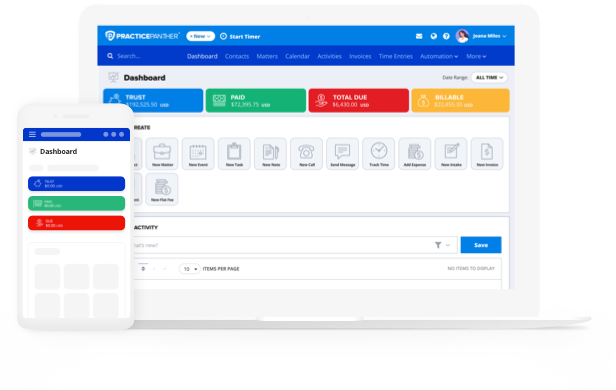Access the stream of this event on-demand. Submit the form here and view it for free!
When you onboard a new client they will immediately be wondering if they made the correct choice in hiring you to represent them. Proving your expertise immediately is easier than you think, it all comes down to preparation and organization. In this recorded live stream, you will learn the 10 key tips in performing exceptional, and most importantly, repeatable client intake.
Tip 1 – You need to know your ideal client (2:20)
In order to best serve a new client, you need to first know how they should be served. You may work across different practice areas, or even court jurisdictions, but consistency is key when it comes to the client intake process. Your firm should have a unique process for every client that reaches out to your firm. This sounds daunting, but creating automated workflows is the best way to maintain your relationship with your clients. Another great strategy is to deploy drip campaigns which are a great way to ensure you send an introductory email, a follow-up email, and perhaps an email summarizing what to expect during your initial meeting.
Tip 2 – You need to understand your ideal client (4:05)
So you know the sort of situation your client is in, but now you need to know not just who they are, but their comfort level with the law. Are they going to know what a consultation is vs a strategy meeting? What’s their actual problem? What’s their end goal? What other problems are they going to have?
You can set yourself up for success by having additional information for your clients based on their current situation. If you’re a personal injury firm, do you have a relationship with a car dealership you can connect your client to in order to set them up with a new car if they are a victim of a car crash?
Tip 3 – Be where your clients are going to be (5:43)
Make sure your client knows that when they have a question, you are the perfect contact for them. You have to know what your client is going to do when they need your services. Estate planning clients will speak to their financial advisor, people with real estate issues might contact a realtor, victims of car crashes search for a good lawyer on their phone. Are you positioning your practice in these precise places where your ideal client will show up?
Tip 4 – Track your leads as best as you can (7:21)
If you’re not tracking your leads, you have no idea where your clients are coming from. You must be meticulous in how you track your incoming leads. Track where your referrals are coming from by using UTM codes in your links, or use tags in PracticePanther to create a detailed picture so you can identify trends. Jordan’s had success using PracticePanther tags by tagging leads with three different sets of tags:
- The How: Google, newspaper ad, etc.
- The Who: Who did they initially speak to, what steps were taken
- The What: Did you get hired or did you lose the sale
Tip 5 – Proactively tell the prospect what they need to know (10:28)
As a lawyer, you’re perceived to have all of the answers (even if you always don’t). In the beginning of an engagement, you can share social proof with your leads, share great reviews that pertain to their specific case, ensure that all content is as targeted as possible if you have different practice areas.
Aside from sharing stories about past success to make leads feel comfortable, you should make your consultation scheduling as easy as possible, let them schedule online, make sure you’re calling back your clients and always follow up to answer any questions prior to a meeting. Lastly, have an in-depth intake form so that you can come into your consultation already knowledgeable about the case and wow them with the action items you can provide right off the bat.
Listen to the full live stream for all the tips
The full recording of the live stream covers all the client intake tips for your firm that you don’t want to miss out on. Fill out the form to access the recording below.



